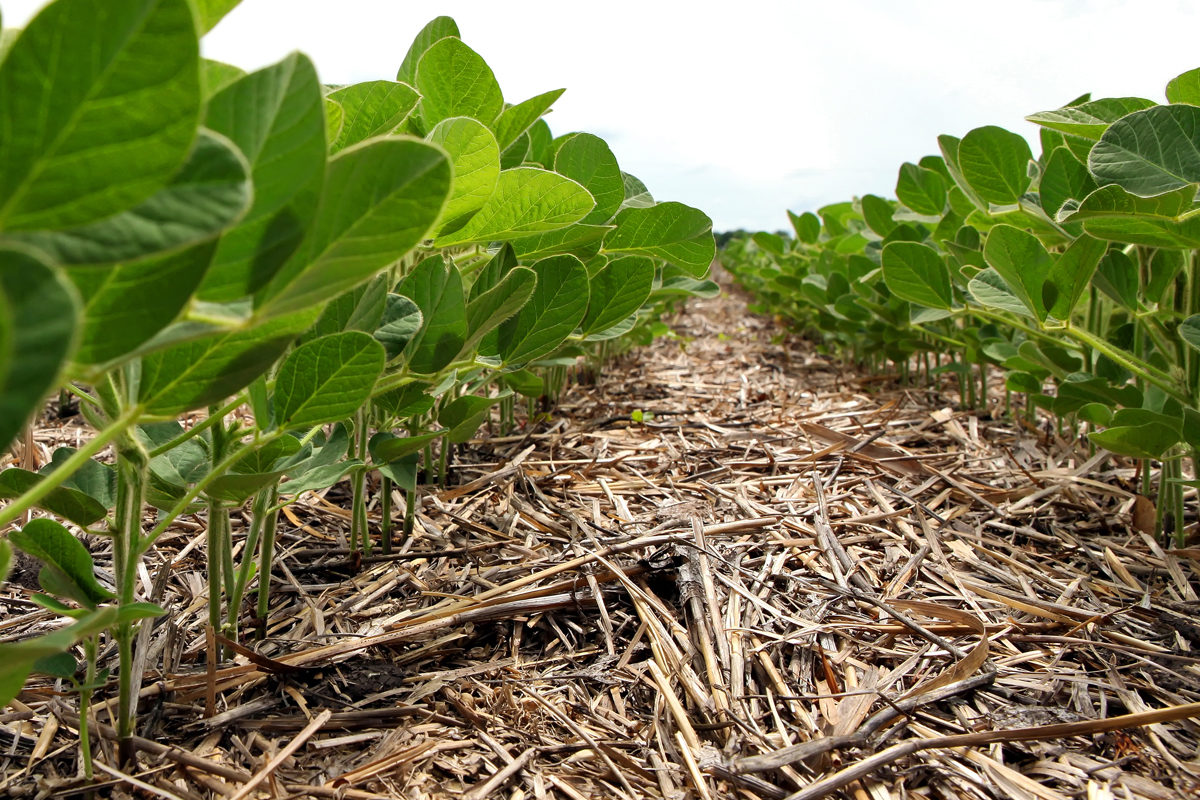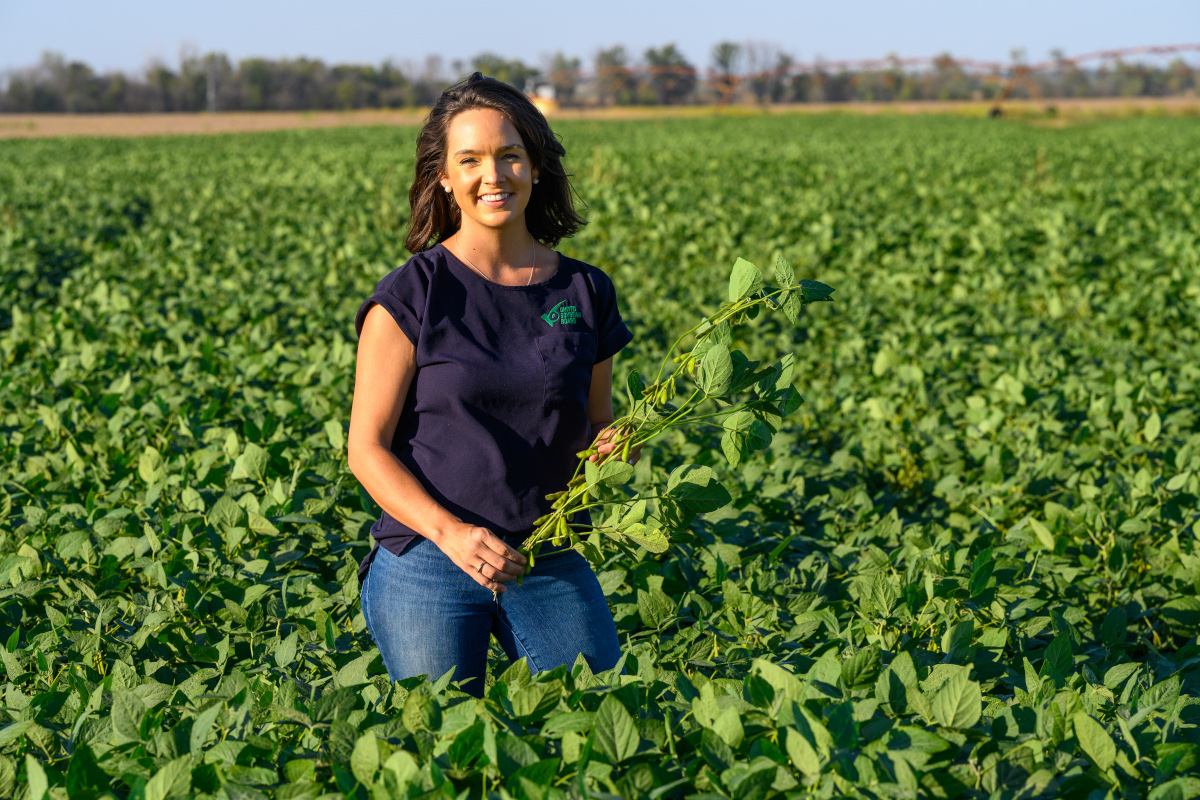Double Cropping Beneficial to Farmers

The utilization and adoption of double cropping continues to gain acceptance as a production practice among U.S. farmers. A Michigan State University study concluded that double cropping, and large-scale production of diverse crops, could benefit food and biofuel production and “deserves more study for widespread application.” The soy checkoff continues to invest in research to confirm the value of this production option to soybean farmers.
The Soybean Research and Information Network, or SRIN, shares double-cropping recommendations from checkoff-funded research across all soybean production regions. For example, Oklahoma research found that wheat residue has no impact on soybean yields. That means farmers can plant soybeans within hours of harvesting winter wheat if soil moisture is adequate.
“We advise growers in a double-cropped soybean system to apply a pre-plant, long-term residual herbicide with their burndown program,” said Josh Lofton, Oklahoma State University cropping system specialist. “It’s an input that is often omitted in a double-crop system. We found in our data by including the residual herbicide, they can get as much value, if not more, as in full-season soybeans. We also recommend inoculant, especially in high-residue situations.”
Double-cropping soybeans along with corn and adding a wheat crop can be a profitable alternative to a traditional corn/soybean rotation. Good timing, careful planning and strong stand establishment are just some of the factors that are critical for a successful double-crop system.
If you are in an area where double cropping is a viable production option, timing is essential. A typical time frame for double cropping is to plant corn in April/May of one year and harvest it in September. A winter wheat crop would then be planted in October and harvested in June/July, followed by planting soybeans in June for an October harvest.
Research conducted in Kansas and Ohio, and featured on SRIN, verified the impact of planting date on double-crop soybean yields. Those studies recommend harvesting wheat early at a higher moisture content to allow soybeans to be planted sooner or to consider planting winter barley, which matures a couple weeks earlier than wheat.
Double cropping is all about maximizing and optimizing yield and profitability. “Yield and profitability from double-crop systems can indeed increase with better management practices and early-maturing varieties. This also allows the double-crop system to succeed farther north,” said Southern Illinois University plant pathologist Jason Bond. “We have been able to show that a wheat/soybean double-crop rotation is now more economically viable and sustainably valuable.”
The advantages of double cropping are not without some risk. As mentioned previously, consistency in production method is paramount. Without sticking to a management strategy, you may not see the benefits of double cropping.
Another risk is a reduction in yield potential from later-planted soybeans than conventional soybeans planted in the spring, particularly if rainfall is insufficient. The tight time frame that comes with double cropping could introduce some labor logistic issues, so be prepared to adjust accordingly, as you’ll likely be finishing up planting and spraying your full-season soybeans and harvesting your wheat crop at the same time.
Choosing your variety is a critical decision when double cropping. Soybeans planted after wheat will not have the opportunity to get as tall as your full-season soybean crop, so you will need to plant varieties with later maturities. Planting at higher populations and choosing a taller variety that’s suitable for your environment and market are also important.
Crop insurance is also a consideration when deciding to implement a double-cropping program. In May of 2022, the White House announced a plan to expand the number of counties eligible for double-crop crop insurance across the U.S. While producers can potentially sign a written agreement with the USDA Risk Management Agency to provide coverage for the crop, expansion would negate the need for the written agreements but can potentially change how Actual Production History yields are calculated.
Double-cropping soybeans increases land use efficiency and could add to your farm’s bottom line.



